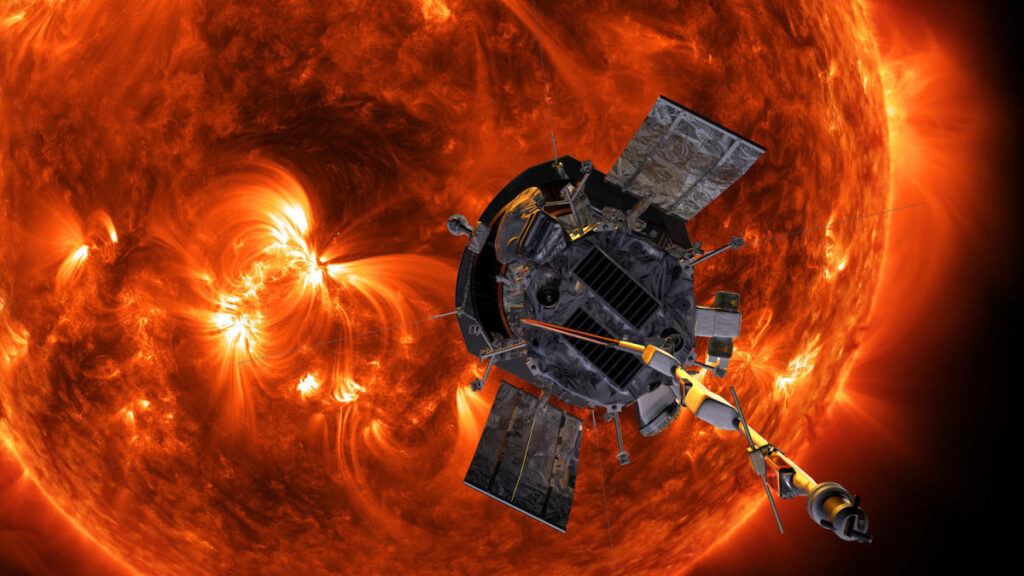NASA’s Parker Solar Probe is on the verge of making a historic close approach to the sun on Christmas Eve, set to dive within 3.86 million miles of the solar surface. Scheduled for 6:40 a.m. ET, the probe will reach speeds of approximately 430,000 mph, marking it as the closest any human-made object has ever ventured to our star. This mission is designed to gather unprecedented data about the sun’s outer atmosphere, the corona, which is notably hotter than the sun’s surface, allowing scientists to delve deeper into the mysteries of solar dynamics. As Kelly Korreck, a program scientist in NASA’s heliophysics division, notes, this approach represents an incredible opportunity to observe the sun up close, akin to being 96% closer to its surface.
The Parker Solar Probe will experience its closest encounter without direct communication with mission controllers due to the sun’s intense heat and radiation. This means that NASA will wait for signals indicating the probe’s survival, expected to arrive three days post-flyby. Images captured during this historic close encounter will likely be transmitted back to Earth in January. During its approach, the probe is anticipated to pass through plumes of solar plasma and may even enter active sun regions, which will be critical in studying the phenomena that lead to space weather events, including solar flares and solar wind.
One of the primary goals of the Parker Solar Probe is to study the sun’s corona, whose temperature perplexes scientists, as it is significantly hotter than the solar surface. Observing the corona closely will assist researchers in not only understanding its extreme heat but also in gauging how solar storms evolve and erupt into space. This data is vital, as solar storms can have significant ramifications for Earth by releasing charged particles that can impact satellites and disrupt power grids. By dissecting these events, scientists hope to improve forecasting for space weather much like meteorologists predict weather patterns on Earth.
Launched in 2018, the Parker Solar Probe has orbited the sun over 20 times and is approaching its series of final close encounters. The Christmas Eve flyby is one of three planned for this phase of the mission. The probe is named after the pioneering astrophysicist Eugene Parker, who first proposed the concept of solar wind, a significant aspect in understanding solar phenomena. Parker, who passed away in 2022, became a landmark figure in solar research, and the probe carries his legacy as it seeks to further our understanding of the sun.
This flyby is timed to coincide with the solar maximum, the sun’s 11-year activity cycle when solar storms and magnetic activity peak. Korreck and other scientists are excited about the possibilities this timing presents; they hope the Parker Solar Probe will document any solar storms in action on Christmas Eve. This occurrence could provide crucial real-time data regarding the relationship between solar activity and its consequences on space weather, enhancing our grasp of how solar phenomena affect Earth’s environment.
The Parker Solar Probe embodies a significant leap in humanity’s efforts to explore and understand the sun. By closely studying the solar wind and the mechanisms driving space weather from within the corona, scientists are poised to redefine our understanding of solar dynamics. This mission represents a concerted stride toward unlocking the cosmic mysteries that govern the sun’s behavior, ultimately helping to safeguard our technological landscape here on Earth amidst the dynamic interplay between the sun and our planet.

